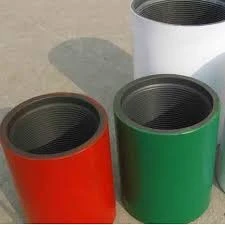- Afrikaans
- Albanian
- Amharic
- Arabic
- Armenian
- Azerbaijani
- Basque
- Belarusian
- Bengali
- Bosnian
- Bulgarian
- Catalan
- Cebuano
- Corsican
- Croatian
- Czech
- Danish
- Dutch
- English
- Esperanto
- Estonian
- Finnish
- French
- Frisian
- Galician
- Georgian
- German
- Greek
- Gujarati
- Haitian Creole
- hausa
- hawaiian
- Hebrew
- Hindi
- Miao
- Hungarian
- Icelandic
- igbo
- Indonesian
- irish
- Italian
- Japanese
- Javanese
- Kannada
- kazakh
- Khmer
- Rwandese
- Korean
- Kurdish
- Kyrgyz
- Lao
- Latin
- Latvian
- Lithuanian
- Luxembourgish
- Macedonian
- Malgashi
- Malay
- Malayalam
- Maltese
- Maori
- Marathi
- Mongolian
- Myanmar
- Nepali
- Norwegian
- Norwegian
- Occitan
- Pashto
- Persian
- Polish
- Portuguese
- Punjabi
- Romanian
- Russian
- Samoan
- Scottish Gaelic
- Serbian
- Sesotho
- Shona
- Sindhi
- Sinhala
- Slovak
- Slovenian
- Somali
- Spanish
- Sundanese
- Swahili
- Swedish
- Tagalog
- Tajik
- Tamil
- Tatar
- Telugu
- Thai
- Turkish
- Turkmen
- Ukrainian
- Urdu
- Uighur
- Uzbek
- Vietnamese
- Welsh
- Bantu
- Yiddish
- Yoruba
- Zulu
bull plug vs hex plug
Bull Plug vs. Hex Plug A Comprehensive Comparison
In the realm of plumbing, mechanical engineering, and various industrial applications, the terms bull plug and hex plug often arise. Both types of plugs serve as essential components in managing fluid systems, preventing leaks, and ensuring proper functioning of equipment. While they may appear similar at a glance, their designs, applications, and advantages differ significantly. This article aims to explore these differences and help you determine which type of plug best suits your needs.
What is a Bull Plug?
A bull plug, also known as a rounded plug, features a round, dome-like head designed to fit snugly into a pipe or fitting. The primary function of a bull plug is to seal off openings in piping systems, maintaining pressure and preventing leakage from the system. Bull plugs are commonly made from various materials, including brass, stainless steel, and plastic, which allows them to cater to different environments and fluid types.
The rounded shape of a bull plug eases installation since it does not require corners or edges that could make alignment and insertion challenging. Bull plugs are often used in systems where rapid sealing is crucial, such as in emergency repairs or temporary setups.
What is a Hex Plug?
Conversely, a hex plug features a hexagonal head, which provides an advantage in terms of gripping and torque application. This design allows for secure tightening and loosening by using a wrench or pliers, making hex plugs ideal for high-pressure systems or situations where high levels of tension may be involved. Like bull plugs, hex plugs are available in multiple materials, ensuring compatibility with various liquids and gases.
Hex plugs are commonly used in hydraulic systems, instrumentation, and oil and gas applications. Their hexagonal shape ensures a firm grip, reducing the risk of slippage while tightening. This characteristic is particularly beneficial in installations where space is limited, and precise handling is essential.
Comparing Applications
bull plug vs hex plug

When it comes to applications, the choice between a bull plug and a hex plug largely depends on the specific requirements of the project. Bull plugs are advantageous in scenarios where quick sealing is needed without the need for subsequent adjustments or frequent disassembly. They are often employed in irrigation systems, water supply lines, and non-critical pressure vessels where time efficiency is paramount.
On the other hand, hex plugs are preferable for applications demanding higher resistance to pressure or where components may need to be frequently removed and reattached. Their design makes them highly effective in areas where mechanical integrity is vital, such as in automotive engines or high-performance machinery.
Advantages and Disadvantages
Each type of plug presents its own set of advantages and disadvantages. Bull plugs are simpler to install and can provide a reliable seal with minimal effort. However, they may not withstand high-pressure conditions as well as hex plugs, which can lead to potential leakage in critical applications.
Hex plugs, while providing excellent sealing properties under high-pressure conditions and easy manipulation, may require more tools for installation and can be more time-consuming to work with in tight spaces.
Conclusion
Ultimately, the decision between a bull plug and a hex plug boils down to the specific demands of your project. If your application requires rapid installation and low-pressure sealing, a bull plug may be the right choice. Conversely, if you need secure sealing in high-pressure situations with the possibility of frequent adjustments, a hex plug will likely serve you better.
Understanding the differences between these two types of plugs will allow you to make an informed choice, enhancing the efficiency and reliability of your fluid systems. Whether in plumbing, manufacturing, or any industrial setting, selecting the appropriate plug can significantly impact safety and performance. In summary, evaluate your needs, consider the conditions under which you'll be operating, and choose accordingly to optimize your results.
-
Tubing Pup Joints: Essential Components for Oil and Gas OperationsNewsJul.10,2025
-
Pup Joints: Essential Components for Reliable Drilling OperationsNewsJul.10,2025
-
Pipe Couplings: Connecting Your World EfficientlyNewsJul.10,2025
-
Mastering Oilfield Operations with Quality Tubing and CasingNewsJul.10,2025
-
High-Quality Casing Couplings for Every NeedNewsJul.10,2025
-
Boost Your Drilling Efficiency with Premium Crossover Tools & Seating NipplesNewsJul.10,2025







